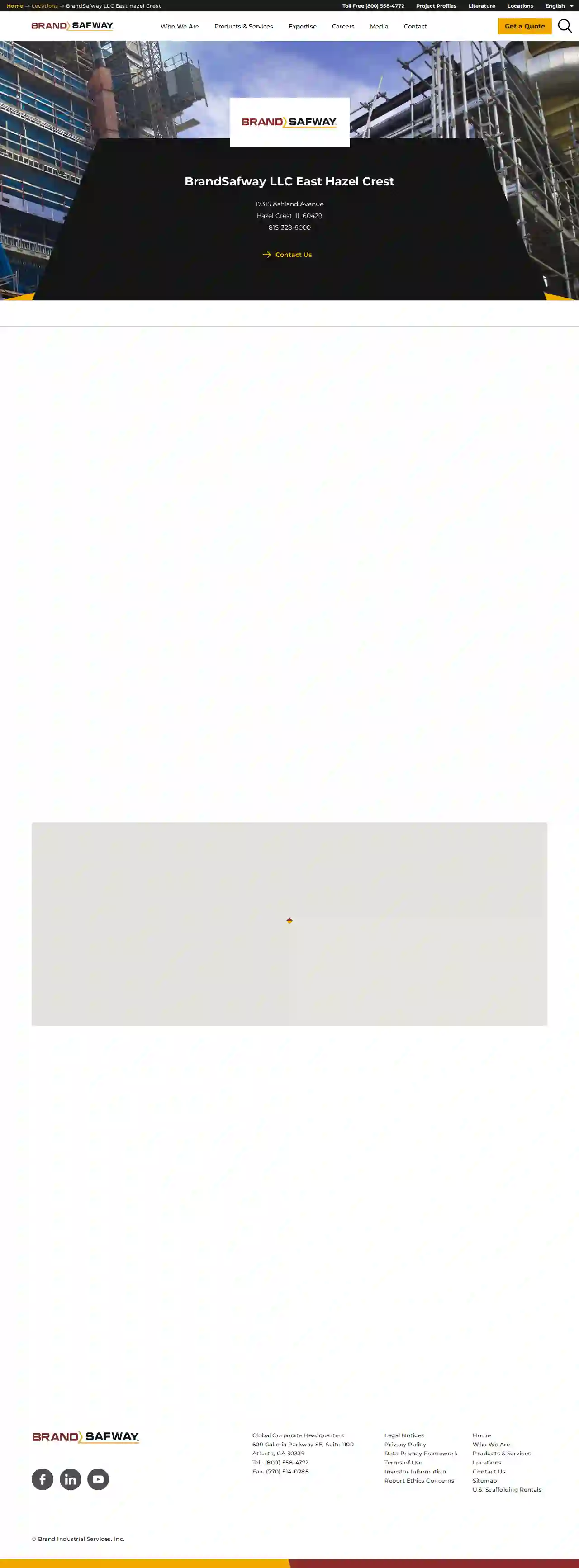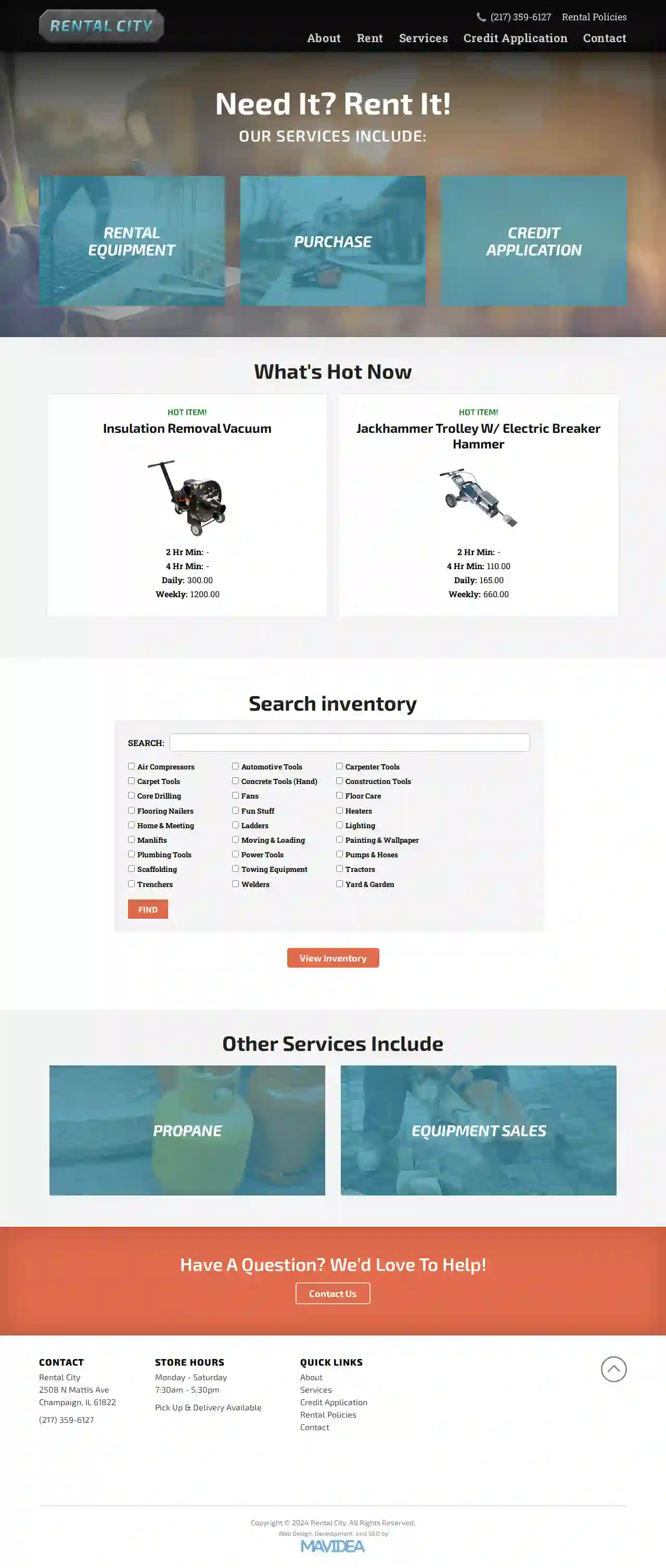Scaffolding Companies Elk Grove Village
Find the best Scaffolding Solutions in Elk Grove Village
Receive up to 3 Construction Scaffolding quotes for your project today! Compare profiles, reviews, accreditations, portfolio, etc... and choose the best service.

Chicago Scaffolding Inc.
4.331 reviewsChicago, Illinois, 4824 W. Lake Street, 60644, USChicago Scaffolding Inc. (CSI), family owned and operated since 1988, has a rich history of experience and a family tradition of hard work and dependability. CSI prides itself on the core belief of providing exceptional service, quality, and safety to all clients. With a strong commitment to long-term professional relationships, we prioritize 100% customer satisfaction.
- Services
- Why Us?
- Accreditations
- Our Team
- Testimonials
- Gallery
Get Quote
Bracing Systems Construction Supplies and Equipment
4.329 reviewsHanover Park, 4N350 Old Gary Ave, 60133, USWe understand your challenge: To get all your equipment and supplies reliably and on time, while maintaining good profit margins. As your most reliable source of construction equipment and contractor supplies, Bracing Systems can supply your company with the products to get your job done right and under budget. Whether you are a general contractor, masonry contractor, concrete contractor or a contractor in another specialized trade, we stock it for customer pick up or can deliver it right to the job site. Our service department has a huge inventory of parts in stock to repair your Lull, Mustang, JLG, Pettibone, or Manitou Forklift, Essick Mixer, Hydro-Mobile Scaffolding, Stihl Power Equipment, Multiquip Compactors /Troweling Machines and many more brands of construction equipment. We offer convenient customer pick up at our 2 suburban locations or excellent on time delivery to your jobsite.
- Services
- Why Us?
- Gallery
Get Quote
SafwayAtlantic by BrandSafway - Chicago
4.19 reviewsChicago, IL, 123 Access Solutions Blvd, 60601, USBrandSafway is a leading provider of access solutions, including scaffolding, aerial work platforms, and forming and shoring equipment. With a strong commitment to safety, quality, and customer satisfaction, BrandSafway offers a wide range of services tailored to meet the unique needs of clients across various industries. Their team of experienced professionals works closely with clients to understand their requirements and deliver customized solutions that enhance efficiency and productivity. BrandSafway is dedicated to providing innovative access solutions that ensure safe and efficient project execution.
- Services
- Why Us?
- Accreditations
- Our Team
- Testimonials
Get Quote
Menards
4.4584 reviewsChicago, US- Services
- Why Us?
Get Quote
BrandSafway LLC East Hazel Crest
123 BrandSafway Blvd, East Hazelcrest, 12345, USBrandSafway is a leading provider of access solutions, including scaffolding, aerial work platforms, and forming and shoring equipment. With a strong commitment to safety, quality, and customer satisfaction, BrandSafway offers a wide range of services tailored to meet the unique needs of clients across various industries. Their team of experienced professionals is dedicated to delivering innovative solutions that enhance efficiency and productivity, ensuring successful project outcomes.
- Services
- Why Us?
- Accreditations
- Our Team
- Testimonials
Get Quote
Walmart Supercenter
3.92600 S Eastwood Dr, Woodstock, 60098, USWelcome to Walmart! Walmart is a leading retailer offering a wide variety of products and services to customers across the globe. We strive to provide our customers with the best possible shopping experience, offering competitive prices, a vast selection of merchandise, and convenient shopping options. Our mission is to help people save money and live better, and we are committed to providing our customers with the best possible value. At Walmart, we believe in the power of community and are dedicated to supporting the communities we serve. We are proud to be a part of the Woodstock, IL community and are committed to providing our customers with the best possible shopping experience.
- Services
- Why Us?
- Gallery
Get Quote
Menards
4.3Chicago, USMenards is a home improvement store that offers a wide range of products and services for homeowners, contractors, and DIY enthusiasts. With a long history of providing quality products and excellent customer service, Menards has become a trusted name in the industry.
- Services
- Why Us?
Get Quote
International Equipment Inc
25218 S State St, Crete, 60417, USInternational Equipment, Inc. is a leading supplier and installer of high-quality scaffold equipment that enables your crews to work productively and safely at heights. Wherever you need your scaffolding to take you International Equipment has the right equipment for your project. Servicing all of the Midwest, International Equipment responds quickly to the needs of our customers, even during emergencies. We are a devoted team committed to providing the right product for your project with a personal touch that many larger competitors cannot match. We offer designs in augmented or virtual reality as well as 3D allowing you to see your design as it will appear when installed. You won’t pay for estimator’s guess work or extra rental charges for equipment you don’t need. Parts lists and installation costs are accurate with our estimating systems. With our resources and extensive inventory of equipment we are able to provide you with a variety of options to buy or rent. From project planning and installation of equipment to rigorous safety standards and training, International Equipment is there for you from start to finish.
- Services
- Why Us?
- Gallery
Get Quote
Ziegler's Ace-Lake in the Hills
4.4234 reviews123 Main St, Bartlett, IL, 60103, USZiegler's Ace is a team dedicated to developing trusting relationships with neighbors by providing everyday solutions for homes and businesses. Our objective is to win and have fun doing it. We believe in honesty, reliability, accountability, empathy, and ethical behavior as the building blocks to any successful business or trusted relationship. We strive for greatness with a humble, modest, and respectful attitude. Our vision is to be the best, most helpful stores on the planet.
- Services
- Why Us?
- Gallery
Get Quote
Rental City Inc
4.5109 reviews2508 N. Mattis Ave., Champaign, 61821, USWelcome to Rental City! When you need a project done right, quality tools can be just as important as the people using them. We know you have other choices for your equipment needs. What sets Rental City apart from others is our dedication to you, our customer, with spectacular customer service. With decades of experience and over 2,000 items available for short-term rental, Rental City is a family owned business dedicated to serving your needs; whether residential or corporate. Rental City began with Mac D. Drysdale’s commitment to providing the best possible equipment in impeccable condition to benefit the greater Champaign community over 60 years ago. Today, we strive to offer the best product catalog, most convenient solutions, and the most effective and pleasant customer service available. We look forward to the opportunity of serving your family or business, and are here to help you get the job done.
- Services
- Why Us?
- Gallery
Get Quote
Over 2,353+ Scaffolding Contractors on our directory
Our scaffolding pros operate in Elk Grove Village and surroundings!
ScaffoldingHQ has curated and vetted the Best Scaffolding Contractors near Elk Grove Village. Find the most reliable contractor today.
Frequently Asked Questions About Scaffolding Companies
- Steel: The most common material due to its strength, durability, and resistance to corrosion.
- Aluminum: Lighter than steel, often used for smaller projects or where weight is a concern.
- Timber: Used for decking platforms and some traditional scaffolding structures. It's less common now due to its susceptibility to rot and damage.
- Fiberglass: Used in specialized applications where electrical conductivity is a concern.
- A temporary structure with a larger platform for workers and materials.
- Offers greater stability and working space.
- Suitable for tasks requiring movement and multiple workers.
- Used for higher elevations and more complex projects.
- Used for reaching specific points at height for short durations.
- Less stable than scaffolding, requiring more caution and balance.
- Not suitable for tasks involving heavy materials or extended work periods.
- Tube and Clamp Scaffolding: A traditional and versatile system using individual tubes and clamps. It's highly adaptable but requires more time to erect.
- System Scaffolding: Pre-engineered systems with modular components that fit together quickly. They offer speed and efficiency, especially for larger projects.
- Suspended Scaffolding: Hung from a roof or overhead structure, ideal for high-rise buildings or areas with limited ground access.
- Mobile Scaffolding: Mounted on wheels, allowing easy movement around a worksite. Suitable for tasks like painting or plastering.
- Specialized Scaffolding: Cantilever scaffolding, rolling towers, and other specialized systems cater to specific needs.
What are some common materials used in scaffolding?
Can I erect scaffolding myself?
What is the difference between a scaffold and a ladder?
Scaffolding:
What are the different types of scaffolding?
What are some common materials used in scaffolding?
- Steel: The most common material due to its strength, durability, and resistance to corrosion.
- Aluminum: Lighter than steel, often used for smaller projects or where weight is a concern.
- Timber: Used for decking platforms and some traditional scaffolding structures. It's less common now due to its susceptibility to rot and damage.
- Fiberglass: Used in specialized applications where electrical conductivity is a concern.
Can I erect scaffolding myself?
What is the difference between a scaffold and a ladder?
Scaffolding:
- A temporary structure with a larger platform for workers and materials.
- Offers greater stability and working space.
- Suitable for tasks requiring movement and multiple workers.
- Used for higher elevations and more complex projects.
- Used for reaching specific points at height for short durations.
- Less stable than scaffolding, requiring more caution and balance.
- Not suitable for tasks involving heavy materials or extended work periods.
What are the different types of scaffolding?
- Tube and Clamp Scaffolding: A traditional and versatile system using individual tubes and clamps. It's highly adaptable but requires more time to erect.
- System Scaffolding: Pre-engineered systems with modular components that fit together quickly. They offer speed and efficiency, especially for larger projects.
- Suspended Scaffolding: Hung from a roof or overhead structure, ideal for high-rise buildings or areas with limited ground access.
- Mobile Scaffolding: Mounted on wheels, allowing easy movement around a worksite. Suitable for tasks like painting or plastering.
- Specialized Scaffolding: Cantilever scaffolding, rolling towers, and other specialized systems cater to specific needs.